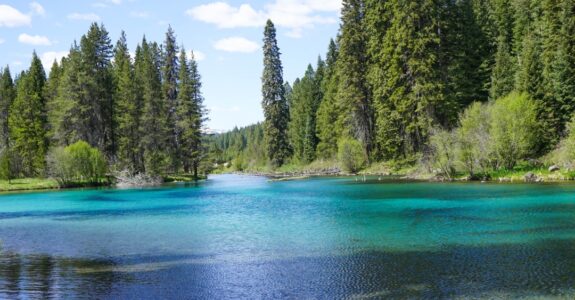
Wastewater Lagoon Repair and Refurbishment
9 Facts You Should Know
April 12, 2023
With recent developments and a significant focus on the Clean Water Act and National Pollutant Discharge Elimination System (NPDES) the status and compliance of wastewater lagoons have become a hot topic and an area of concern for organizations administering lagoons. Keeping lagoons in optimal functioning condition and extending their useful life cycle is of paramount importance. But as complicated as this sounds, it doesn’t have to be an area of concern. With our wealth of experience in the management and maintenance of wastewater lagoons, Montrose can help you navigate this often complex process.
How does this affect your lagoon? I’m going to take a few moments to present some common questions, facts, and important informational tidbits that could help you with your lagoon management, and maybe even save you some time and money.
Wastewater lagoons – specifications, lifecycle management, and maintenance
Montrose has a wealth of experience in working around wastewater lagoons, and ensuring compliance with applicable standards and operating conditions. Here are some points that you might find interesting.
1) Essentially, what are lagoon repairs, and what necessitates this?
Typically lagoon repairs are required due to shear forces caused by wind and or mechanical stresses. Tears in the high-density polyethylene (HDPE) liner and seams can be almost invisible to the naked eye and the holes and tears propagate to become larger and larger in the covers. Additionally, rainwater will collect in the covers, causing substantial pressure on the HDPE fabric.
Occasionally, rain removal systems can be undersized, incorrectly installed, or damaged by wind or other natural forces. For liners, the portion between the soil impoundment and liquid lagoon water can have holes become larger from hydraulic pressure causing leaks into groundwater. These holes often plug from sediment, however, any seismic shifts will pull the liners apart or the compacted clay liners and may lead to catastrophic failures. Biogas leaks can also be a potential issue for revenue and explosive air fuel ratios, and finally – water loss can be cause for concern as well.
2) What lagoon services does Montrose provide?
First and foremost we are engaged to perform regularly scheduled inspections for damage in its earliest stages. When this damage is noted, a rapid deployment to repair is of paramount importance. Holes, tears, and seam damage can escalate into something much worse if not detected early and repaired promptly.
3) Who needs this support?
Essentially, anyone with a wastewater lagoon can benefit from our experience and proven programs and processes. We engage with Lagoon Digester operators and other Directors of Operations and or Digest Engineering firms.
4) Is our work affected or prescribed by any state or federal regulations?
Regional water control boards are the typical agencies responsible for the civil engineering of most lagoons. Gas systems are typically covered under local, state, and federal rules.
5) Does anyone else provide this kind and level of service?
With the regulatory concerns and high stakes of these lagoon repairs, this sort of service is typically done by an OEM builder and/or competent engineer firm’s guidance.
6) What is the benefit of working with Montrose for Lagoon Repairs?
We’ve got decades of experience working around and with lagoons, and our teams have the experience and repair skills for hazardous environments, and can perform these functions more efficiently by our local teams as most lagoon OEMs are located out of state.
7) How long do Lagoon Repairs typically take to complete?
Most commonly, repairs take one day unless they are systematically found. Most often the repairs consist of spot repairs and we regularly find that older covers fail at the seams systematically from increased stresses.
8) Why choose Montrose for your lagoon repairs?
OEM and engineering firms are frequently more expensive for all service cycles and calls as they are not local and usually require hazmat workers. Our local and regional teams mean we can be onsite quicker, as most engineering firms don’t typically staff for hazardous activities, or they lack response resources in a local or regional area. OEM vendors typically rely on operations staff to inform them of inspections and some specialized third-party operators exist but have unskilled or untrained hazardous environments workers. In these cases, liability is a chief concern and shouldn’t be overlooked.
9) Where do most of our lagoon clients operate from?
Although we have global lagoon operating clients, our most common lagoon service areas are rural locations in the central valley of California. This area is also where we have found the largest concentrations of CAFO (Confined Animal Feeding Operations) such as dairy, swine, and beef operators.
For more information
Each wastewater lagoon is unique in its own way, and no two facilities are the same. But our depth and breadth of experience allow us to provide answers suitable to your specific application and situation. For additional information on our lagoon services, please visit our Soil & Groundwater Remediation page or contact us directly.

